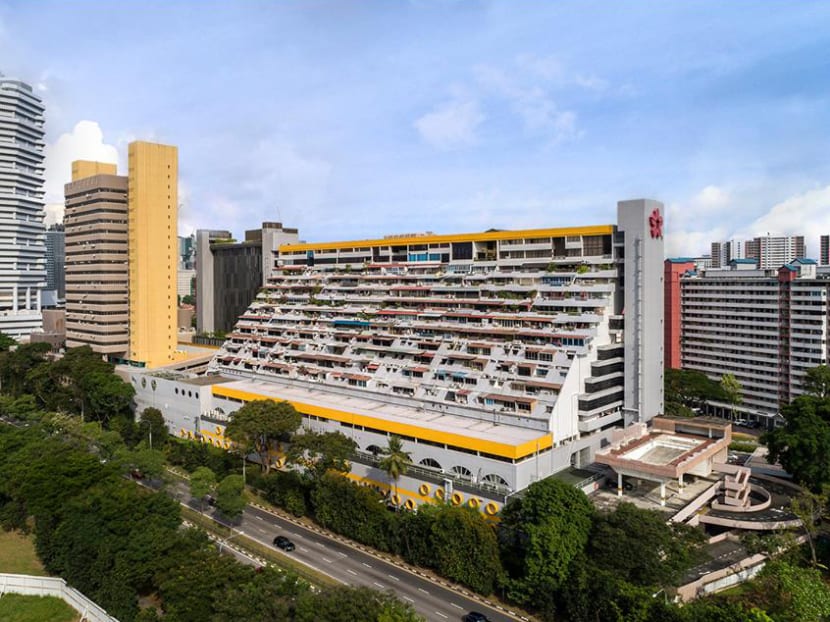Golden Mile Complex stays for now, but experts say conserving it may not help en-bloc sale
SINGAPORE — The iconic Golden Mile Complex on Beach Road is set to stay, for now at least, if the site successfully gets a buyer in its collective sale attempt.

The plot with a mixed-use development has been put up for sale since Oct 31 last year for S$800 million.
SINGAPORE — The iconic Golden Mile Complex on Beach Road is set to stay, for now at least, if the site successfully gets a buyer in its collective sale attempt.
Property analysts are, however, unsure whether retaining the 46-year-old building will make the site more attractive to potential buyers.
The plot with a mixed-use development has been put up for sale since Oct 31 last year for S$800 million. Its marketing agent Edmund Tie & Company announced in a press release on Wednesday (Jan 8) that the Urban Redevelopment Authority (URA) has advised that potential buyers can redevelop up to almost 86,000sqm of the site.
Interested bidders will have to retain the existing 16-storey building and add a building next to it.
Edmund Tie & Company made known publicly its plans to retain the building in its outline application submitted to the URA last October.
Retaining the building is relevant only to the current tender exercise. The building is not yet gazetted for conservation by the authorities.
This means that if there is no buyer for this en-bloc sale, future attempts to sell it may still lead to it being demolished, depending on proposals submitted to the URA.
The latest planning advice by the URA may remove some uncertainties for developers, but Mr Alan Cheong, senior director of research at property consultancy Savills, said that keeping the building creates its own problems because the successful bidder, if any, will have engage in a lengthy discussion with the authorities on what parts of the building needs to be retained.
“It’s complex. And there are no lack of sites out there — government land sales sites. Developers are capitalistic in nature, they don’t want fuss. They don’t care about iconic developments. The objective is to make money,” he added.
Mr Desmond Sim, head of research for Singapore and South-east Asia at property firm CBRE, said that conservation could lead to two outcomes.
“(Conservation is) a rubber stamp to basically confirm the iconic status… that can be used as a marketing stunt for the future,” he said.
However, most developers buy land on the assumption that they can tear existing buildings down. “With conservation slapped on there, developers have no choice but to be more creative and think about adaptive reuse,” Mr Sim added.
Other analysts were more sceptical.
Mr Ku Swee Yong, chief executive officer of property agency International Property Advisor, said that there are still other uncertainties such as the development charge the winning bidder will have to pay, even if the question on how much gross floor area can be developed has been answered by the URA.
The development charge depends on the redevelopment plans for the site, and developers have to engage an architect to draft an outline design before they can work out their sums.
“If the site is sold where the building can be torn down, it takes away all the unknowns,” Mr Ku added.
Another question developers will have is what parts of the building to keep.
Mr Nicholas Mak, executive director of real estate consultancy ZACD Group, said: “Is it just the facade? If 100 per cent (everything has to be kept the way it is), then no point, it’s not attractive to developers.”
Mr Mak also said that developers may have to spend quite a sum to repair and refurbish the building given that it is “already quite old”.
“Conservation status does not necessarily improve a property value. It can (affect the value) because it comes with restrictions. More freedom of usage makes an asset more attractive,” he added.
Both Mr Ku and Mr Mak wondered if it is possible to build a new building next to the existing complex, since the 1.3ha of land it sits on is “almost fully constructed”.
“It’s an impossible task to build the additional gross floor area (GFA),” Mr Ku pointed out. The GFA of the current complex is 50,085sqm.
While a spanner may have been thrown at developers interested in the site, due to the requirement to retain the existing building, some shop owners at the complex told TODAY that they are delighted to know there is a chance they may not have to relocate elsewhere.
Mr Tan Kian Tiong, 50, a manager at Thai restaurant Na Na, said that the restaurant has been in the building for the last 10 years and many of its customers are regulars.
Ms Nong Ho, 54, a business owner of a beauty product store Somjaineuk Trading, likes that Golden Mile Complex is unique and special compared with other buildings in Singapore, which all “look the same”.
She is concerned about losing her shop if the building gets torn down, because she does not know any other place in Singapore that caters to the Thai community.
Customers who patronise Thai restaurant Ycube Mookata have been asking its manager Jeremi Ong, 60, what are the plans for the building. Mr Ong said that they have told him they cannot bear for Golden Mile Complex to be demolished.
“All the (people working here) worry that they will have no job, worry this place no more.”
There were others who were not too sentimental.
The sales manager of mobile phone shop Trinity Connection, Mr Gideon Goh, 50, would like the building to go because it is too old and “unsafe”, pointing out that the floor of some parts of the building would shake quite vigorously whenever someone pushed a trolley over it.











